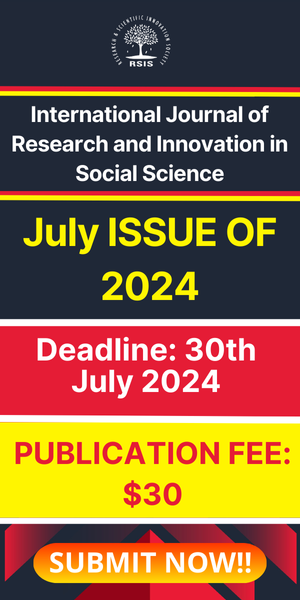Designing a feasible plan to involve smallholders in seafood export supply chains
- December 30, 2020
- Posted by: RSIS Team
- Categories: Applied Science, IJRIAS
International Journal of Research and Innovation in Applied Science (IJRIAS) | Volume V, Issue XII, December 2020 | ISSN 2454–6186
Designing a feasible plan to involve smallholders in seafood export supply chains
Assoc. Prof. Dr. Le Nguyen Doan Khoi
Department of Scientific Research Affairs, Can Tho University
Abstract
This paper reviews the main theoretical and empirical literature related to the involvement of smallholders in seafood export supply chains. Using a farmer perspective as the point of departure, aspects of how to link farmers to export markets are examined and discussed. Food quality management is a key issue in export supply chains. The paper presented a fundamental reorganization of smallholders production system and business relationships among chain actors to provide opportunities to smallholders to adjust their supply to meet global food quality standards.
Key words: smallholders, quality standards, seafood supply chains
1. Introduction
During the last half of the 20th century the complexity of agro-food supply chains has increased considerably. Raw materials are obtained from sources worldwide, an ever-increasing number of processing technologies are used, and a broad range of products is produced. In addition, consumer expectations are continuously changing, demanding more convenience, and fresher foods with more natural ingredients. Hence, food quality management has become increasingly important in the agro-food sector (Spiegel et al., 2003), due to changing consumer requirements, increasing competition, environmental concern, and governmental interests. Higher consumer demands regarding the quality, traceability and environmental friendliness pose the challenges for primary producers, especially smallholders in the developing countries (Henson et al. 2000; Humphrey and Oetero, 2000).
The implementation of quality management has evolved from quality control to quality assurance, and finally to Total Quality Management (TQM) (Deming, 1982; Juran, 1989; Dale and Plunkett, 1990; Dalen, 1996; Zhang, 1997). TQM has the potential to enrich quality management through more motivation and participation-oriented approaches (Pfeifer, 2002), but is not widely applied in the food industry (Kramer and Briel, 2002; Hendriks and Sonnemans, 2002). At this moment, the food industry applies various (combinations of) quality assurance systems such as Good Practices (e.g. GMP, GHP, GAP), HACCP, ISO, BRC, TQM, etc., and the combinations of these systems are applied in order to assure food quality (Luning et al., 2006).
2. Literature review
Luning et al. 2006 defined quality control as a combination of technological and managerial quality functions. In an established food supply chain the quality control should be implemented in the process and product of each member. To guarantee quality, these control activities have to be directed to critical control points (CCPs). According to Reilly and Kaferstein (1997), the following CCPs which are in quality control at aquaculture farm level must be monitored: site selection, water supply, production and harvest. In addition, the CCPs for fish quality will be controlled by processing firms. The way quality is controlled will have consequences for the performance of the chain.


